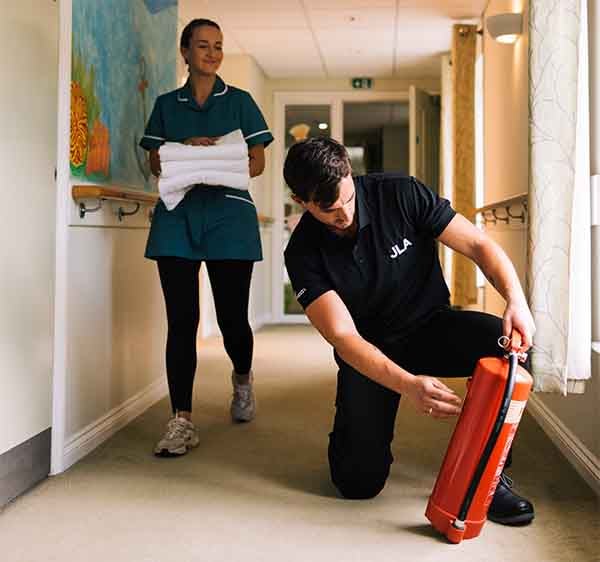Those tasked with managing a care home laundry face a delicate balancing act between maintaining optimal hygiene standards and laundering items as quickly and cost-effectively as possible. That’s on top of ensuring that the laundry facility is running efficiently and safely at all times, with the appropriate commercial washing machines and commercial tumble dryers and best practices in place to reduce the risk of cross-contamination from infected linens and clothing.
With this in mind, what are the main pain points in care home laundry rooms? And how exactly do you resolve them? This guide will look at the most common challenges faced in social care laundry facilities, along with some solutions on how to avoid them.
Differences in care homes compared to other settings
Even in contrast to other high-demand laundries, like hospitals, the needs of care homes pose unique challenges to laundry personnel and managers alike. This is largely due to the sheer diversity of items coming through the laundry at any one time, including:
- Residential linens like bed sheets, towels, tablecloths and cushion covers
- Personal clothing belonging to residents
- Contaminated and infected items from specialist nursing wards
- PPE and staff uniforms
Few other laundry facilities, in any sector, see such a wide variance in laundry type, with the residential element of care homes placing a significant demand on the centre’s laundry processes.
Infection control and cross-contamination
Care home laundry regulations dictate that facilities take a proactive approach to infection control and hygiene to reduce the risk of cross-contamination. As such, special processes and technologies are required to maintain optimal health and safety standards – something which requires significant investment in the right equipment and staff training.
It is important to have separate ‘dirty’ and ‘clean’ zones within a care home laundry room, which is essential for reducing the risk of cross-contamination. Dirty and clean laundry must be handled, stored and transported separately as part of the infection control process.

The challenge of caring for personal items in nursing home laundries
Of all the items to pass through nursing home laundry facilities, personal items belonging to residents pose the biggest challenge to staff and administrators alike. But why?
Since personal items like clothing need to find their way back to their original owner, tracing forms a large part of the sorting process in laundry facilities. Tagging items is, therefore, a critical step, but one that can take time and resources to complete on top of additional duties.
Not only that, but personal items may require additional care and maintenance depending on what they’re made from, meaning that staff may need to alter the chemicals and processes used. This can cause a particular headache when handling contaminated and infected items which require special treatment and care.




